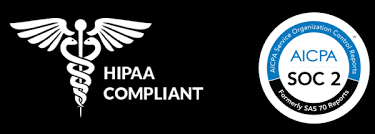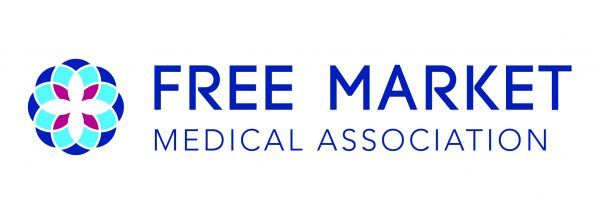Direct Primary Care Practice Model:
Personalized care, No Insurance, Affordable Pricing
Reimagined Healthcare Delivery Through Accessible, Personalized, and Transparent Services

Key points: What is Direct Primary Care Model
Direct Primary Care is a healthcare model where patients pay a monthly or annual fee directly to their primary care physician, eliminating insurance for routine care:
• Offers unlimited access to primary care and longer, personalized appointments
• Includes routine screenings, chronic condition management, and acute-care visits
• Provides care coordination to help navigate the broader healthcare system
• Often covers basic lab work and procedures at no extra cost
• Aims to reduce overall healthcare costs for patients
• Decreases administrative burden for physicians, allowing more focus on patient care
Important
considerations
• DPC is not insurance and doesn't cover emergency or hospital services
• Patients may need a high-deductible health plan or other insurance for comprehensive coverage
DPC seeks to improve healthcare accessibility, enhance the doctor-patient relationship, and offer more transparent pricing for primary care services.
As health insurance becomes increasingly confusing and expensive, new care models have emerged. One option people are considering is direct primary care (DPC) to access and afford basic medical services. Here's what you need to know about DPC to determine if it's the right choice for you.
How Does Direct Patient Care Model Work?
A more Indepth guide on DPC Model
Direct primary care (DPC) is a financial arrangement directly between you and your healthcare provider, bypassing insurance companies and eliminating the need to file insurance claims.
Instead of paying monthly health insurance premiums or copays, you pay your healthcare provider a monthly fee. Since DPC practices don't bill insurance companies, they do not accept any form of insurance. However, most individuals using DPC are also enrolled in a high-deductible health plan.
- Better Health Outcomes: Patients achieve superior health outcomes with Direct Primary Care's innovative service delivery. DPCs provide better access to physicians, empower an authentic therapeutic relationship, and comprehensive patient care.
- Lower Costs: Direct Primary Care (DPC) offers affordable and transparent costs structured around a periodic flat rate, such as membership or subscription. Patients pay directly to their physician, eliminating third parties and Fee-for-Service billing ("FFS") that can inflate costs. Most DPC memberships or subscriptions are priced lower than the average cell phone bill.
- Enhanced Patient Experience:
Patients enjoy unrestricted access to their healthcare provider with minimal to no wait times and longer appointments, whether in-person, virtual, or via phone. This fosters a genuine therapeutic relationship between patient and provider.
Most DPC professionals come from primary care specialties, including:
Internal Medicine: Internal medicine physicians, or internists, who treat adults.
Family Medicine: Family medicine physicians who care for individuals across all age groups, from infants to seniors.
Pediatrics: Pediatricians who treat babies, children, and adolescents.
Depending on your location, DPC practices may include the following healthcare providers as part of the care team, with full or partial authority to diagnose, order tests, and prescribe medications:
Physician Associates (PAs): Also known as physician assistants, they may use either title depending on the jurisdiction.
Advanced Practice Registered Nurses (APRNs): Such as nurse practitioners.
There is a distinction between DPC and concierge medicine, which provides premium services typically catering to higher-income individuals. Both models offer extended visits with physicians, but concierge medicine practices usually charge higher monthly fees and also accept insurance.
Benefits of Direct Primary Care (DPC) Model
A. The benefits of direct primary care model
There are many advantages to using DPC. Here are some direct primary care benefits of entering into a financial agreement with a healthcare professional:
More Time with Your Healthcare Professional : DPC practitioners don't have to prepare and file insurance paperwork, allowing for more in-depth visits and extended time with you. DPC offices typically treat fewer patients than practices that accept insurance, enabling healthcare professionals to take the time to understand your health history in detail and provide more personalized care.
Upfront Pricing : With traditional health insurance, it's often unclear what will be billed and your out-of-pocket costs. Deductibles, copays, and coinsurance are applied, and discounts are negotiated between your healthcare professional and insurance company. Afterward, you receive an explanation of your expected payment.
DPC removes this confusion. You'll know the exact monthly membership cost for basic care and any specific additional fees for enhanced services.
Accessibility and Convenience :
DPC often comes with several perks, including:
- Same-day and next-day visits
- Appointments lasting 30 to 60 minutes
- Telehealth options such as phone calls, emails, texts, and video visits
- Around-the-clock access to your healthcare professional
B. Disadvantages of Direct Primary Care
While DPC has many benefits, there are some challenges to consider before entering into a DPC arrangement with your healthcare professional.
You Still Need an Insurance Plan : The monthly fee for DPC covers consultations, office visits, and basic care, but you may incur additional costs for lab work, imaging, or procedures depending on your contract. Therefore, you'll likely need to pair your DPC membership with some form of insurance plan. Many DPC users also have a high-deductible health plan.
If you have private health insurance, you can use DPC. However, if you have government health insurance, such as Medicare or Medicaid, you must sign an agreement stating that none of the services provided will be billed to those health plans.
Membership Doesn’t Count Toward a Deductible :
According to the IRS, you can deduct your monthly membership fee as a medical expense on your taxes. However, the cost of DPC cannot be counted toward your deductible if you also have a high-deductible health plan or other insurance.
What Are the Costs and Payments for Direct Primary Care?
The monthly fee for most DPC services is typically around $100, and it may be even less. This fee provides you with unlimited and direct access to your primary care provider (PCP), also known as a primary care professional. Some DPC practices may charge an additional visit fee at the time of service.
In general, fees are based on factors such as your age, the type of practice, and the number of family members on your plan. The monthly fee may cover all or some of the following typical primary care services:
- Preventive care (e.g., routine screenings)
- Laboratory tests (e.g., blood tests or urinalysis)
- Management of chronic conditions (e.g., medication checkups)
- Acute-care visits (e.g., for strep throat or the flu)
- Consultations
However, the monthly fee does not include visits to specialists, urgent care, or hospital services. Medications, whether prescription or over the counter, are also not part of a DPC financial agreement.
Why Do You Sometimes Need Insurance with DPC?
While DPC’s monthly fee may be less than a health insurance premium, relying solely on DPC can leave you vulnerable to medical debt. This is because DPC does not cover other health-related expenses such as emergency and hospital care, or prescription medications. To avoid incurring unmanageable medical bills, DPC is often paired with one or more of the following options:
High-Deductible Health Plan (HDHP): This plan covers services like surgeries, catastrophic health issues, emergency room treatment, and hospitalization. An HDHP helps prevent financial devastation in case you need emergency or extensive care.
Health Savings Account (HSA): If you are enrolled in an HDHP, you are eligible to contribute to an HSA. Contributions are made before income tax is deducted, reducing your taxable income. Funds in an HSA can be used for eligible health-related expenses, such as prescriptions, copays, deductibles, vision care, and dental care.
Is Direct Primary Care Worth It?
People using DPC often value the ability to contact their provider at any time, making it particularly appealing to:
- Families with young children
- Frequent travelers
- Older adults with limited mobility
However, since DPC arrangements are commonly paired with high-deductible health plans, they may not be suitable for everyone. DPC may not be ideal for individuals requiring specialized care or those with complex medical conditions. Instead, DPC is typically most beneficial for individuals who are generally healthy or seek enhanced access to a primary care provider for routine visits or short-term health concerns.
If you are considering a high-deductible health plan or already have one, adding a DPC membership could be a beneficial option for you.
Direct Primary Care Software
In today's rapidly evolving healthcare landscape, prioritizing patient engagement and delivering efficient care have become essential. Seamless integration of EHR software is now more critical than ever, as it allows healthcare providers to streamline workflows and achieve the best possible patient outcomes. EHR systems enhance communication between direct primary care (DPC) providers and patients while empowering providers to make informed, data-driven decisions that lead to improved treatment results.
When evaluating EHR software for direct primary care, it becomes evident that user-friendly interfaces and strong data security features are crucial components. These attributes not only improve usability but also safeguard the integrity and protection of patient information, making EHR systems indispensable in modern healthcare practices.
Health Compiler stands out as the perfect EHR system for Direct Primary Care, offering a customizable platform that boosts clinical efficiency and productivity to support optimal care delivery. By focusing on the doctor-patient relationship, Health Compiler enables providers to deliver exceptional, personalized care within the Direct Primary Care model.
Continuing Medical Education Primary Care
Continuing Medical Education (CME) in primary care refers to ongoing educational activities designed for healthcare professionals, particularly those working in primary care settings such as family medicine, internal medicine, pediatrics, and general practice. These activities are structured to help healthcare providers maintain and enhance their knowledge, skills, and competence throughout their careers. CME in primary care typically covers a broad range of medical topics relevant to the diagnosis, treatment, and management of common conditions encountered in primary care practice.
How to Find a Direct Primary Care Professional
If your current primary care provider is open to it, ask if they are willing to enter into a DPC agreement. If that isn't an option, you can search for a nearby DPC practice.
Two helpful resources for locating a DPC practice in your area are the
Direct Primary Care Coalition and the
DPC Frontier Mapper.
Direct Primary Care vs Concierge Medicine
Direct primary care differs from concierge care by featuring lower monthly fees, opting out of participation in payer programs, and applying patient membership fees to a wider array of services.
DPC Practices:
- Patients or sometimes their employers pay monthly membership fees.
- These fees cover extended visits, clinical, lab, and consultative services, care coordination, and comprehensive care management.
- Direct primary care practices do not accept insurance or participate in government programs; they rely solely on patient fees.
Concierge Practices:
- Patients sign an annual membership contract with the option to pay higher fees annually or monthly.
- Membership fees include comprehensive physical exams and screenings.
- These practices may still accept insurance plans and government programs and bill the patient's insurance company for covered services.
- They typically serve higher-income populations.
What is self funded health insurance plan ?
Self-funded health insurance, also known as self-insured plans, is a healthcare financing arrangement where an employer assumes the financial risk for providing health benefits to its employees. Instead of purchasing a traditional insurance policy, the employer sets aside funds to pay employee health claims directly. Typically, these plans are administered by a third-party administrator (TPA) who handles claims processing and other administrative tasks. The employer maintains control over the health plan reserves, earning interest on unused funds, and has the flexibility to design custom benefits tailored to their workforce's needs.
To protect against unexpectedly high claims, most self-funded plans include stop-loss insurance, which reimburses the employer for claims above a specified threshold. This model can potentially lead to cost savings by eliminating insurer profit margins and reducing state premium taxes. However, it requires careful financial management and may be more suitable for larger companies with predictable cash flow. Self-funding offers greater access to claims data, allowing employers to make informed decisions about health benefits and wellness programs.
Conclusion: If you're facing challenges affording medical care or health insurance, or if you're concerned about potential medical debt, direct primary care (DPC) could be a viable option for you. However, before committing to a DPC plan, it's important to carefully evaluate all its advantages and disadvantages. Financial considerations should be a primary focus. Additionally, pairing DPC with enrollment in a high-deductible health plan (HDHP) and a health savings account (HSA) can help manage healthcare costs effectively.
If you're contemplating DPC, consult with your primary healthcare provider to determine if this approach aligns well with your health needs and financial situation.
Exploring other DPC practices in your area serves a dual purpose: it identifies local peers and opens doors for potential collaboration. By connecting with nearby Direct Care providers, you can significantly enhance your practice's reach and efficacy. To assist you in locating DPC practices in your state, we've compiled a list of direct links below.
Direct Primary Care in Alabama
Direct Primary Care in Arizona
Direct Primary Care in Arkansas
Direct Primary Care in California
Direct Primary Care in Colorado
Direct Primary Care in Connecticut
Direct Primary Care in Delaware
Direct Primary Care in District of Columbia
Direct Primary Care in Florida
Direct Primary Care in Georgia
Direct Primary Care in Illinois
Direct Primary Care in Indiana
Direct Primary Care in Kentucky
Direct Primary Care in Louisiana
Direct Primary Care in Maryland
Direct Primary Care in Massachusetts
Direct Primary Care in Michigan
Direct Primary Care in Minnesota
Direct Primary Care in Mississippi
Direct Primary Care in Montana
Direct Primary Care in Nebraska
Direct Primary Care in New Hampshire
Direct Primary Care in New Jersey
Direct Primary Care in New Mexico
Direct Primary Care in New York
Direct Primary Care in North Carolina
Direct Primary Care in North Dakota
Direct Primary Care in Oklahoma
Direct Primary Care in Pennsylvania
Direct Primary Care in Rhode Island
Direct Primary Care in South Carolina
Direct Primary Care in South Dakota
Direct Primary Care in Tennessee
Direct Primary Care in Vermont
Direct Primary Care in Virginia
Direct Primary Care in Washington
Direct Primary Care in West Virginia
Direct Primary Care in Wisconsin
Direct Primary Care in Wyoming
References:
American Academy of Family Physicians. (n.d.). Direct primary care: What is direct primary care?
American Academy of Family Physicians. (n.d.).
Direct primary care
Do you have any other questions?



